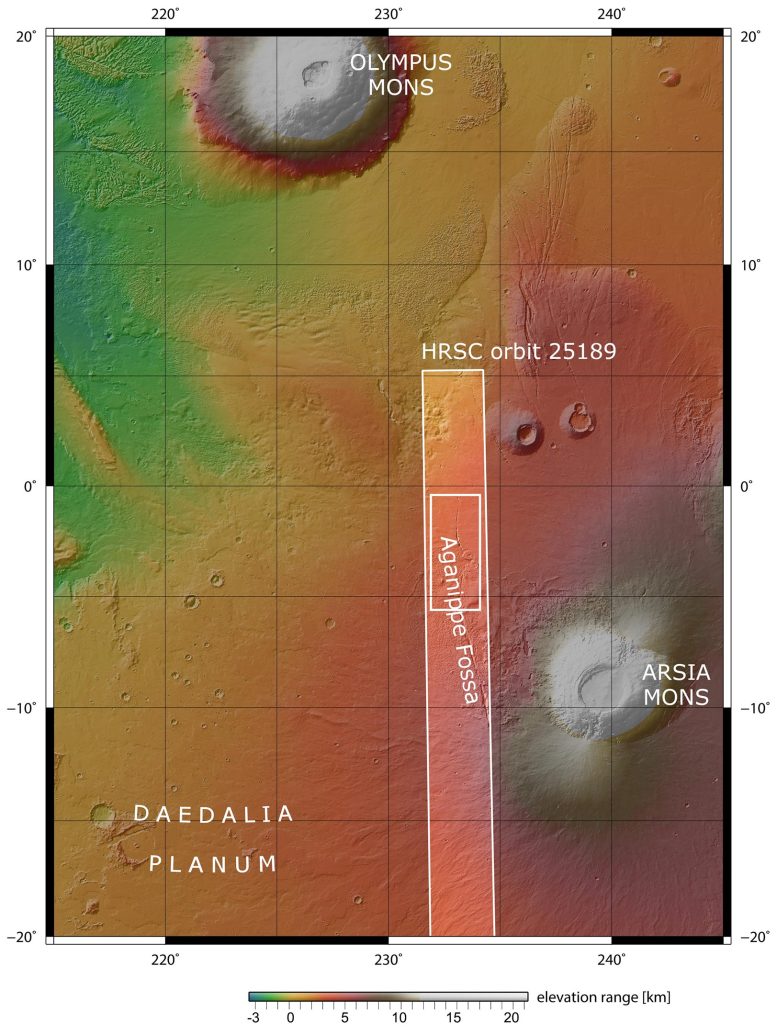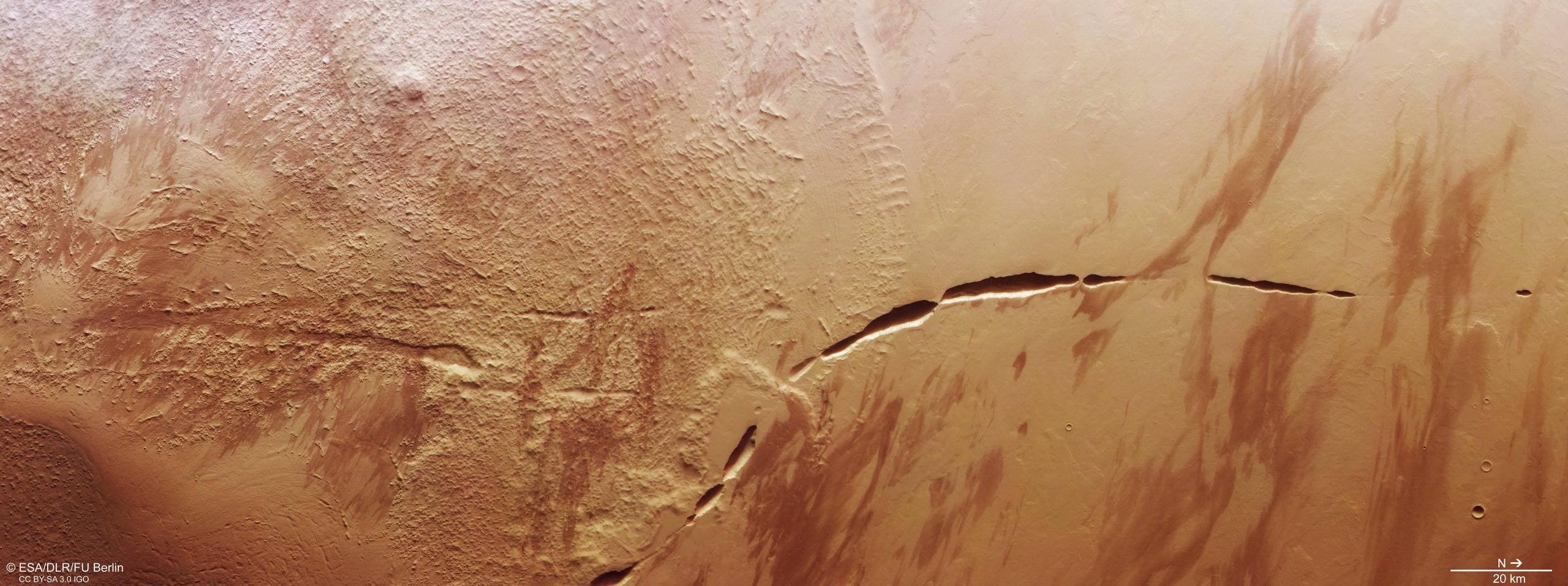
A fascinating and enigmatic feature on Mars, known as Aganippe Fossa, has recently been the subject of intense scientific interest due to new high-resolution images captured by various spacecraft orbiting the red planet. Located in the Tharsis region, which is home to some of Mars' largest volcanoes, this long and narrow scar across Mars' surface has puzzled scientists for decades.
According to data from multiple sources,
[1] Aganippe Fossa is a patchy, roughly 600-km-long feature known as a graben: a ditch-like groove with steep walls on either side. It cuts across the lower flank of one of Mars' largest volcanoes, Arsia Mons.
[2] The European Space Agency (ESA) and German Aerospace Center (DLR) have suggested that magma rising underneath the colossal mass of Tharsis volcanoes may have caused Mars' crust to stretch and crack, resulting in the formation of Aganippe Fossa.
[3] Arsia Mons itself is a massive volcano with a diameter of approximately 435 km and a height of about 2 km more than Earth's tallest volcano. The nearby Tharsis region hosts several other behemoth volcanoes, including Olympus Mons, the tallest volcano in the solar system.
[4] Aganippe Fossa is surrounded by intriguing terrain features such as hummocky terrain and lobate terrain. These terrains are characteristic of Arsia Mons' ring-shaped aureole, a 100,000-square-kilometer disc around the base of the volcano.
[5] Windblown dust and sand have also shaped this patch of Mars, creating interesting zebra-like patterns on its surface. Darker material is deposited on lighter ground or vice versa.
Despite extensive research, scientists are still unsure about the exact formation mechanism of Aganippe Fossa. Theories suggest that it may be tectonic in origin or volcanic, with magma veins forming during a late period of activity. Further investigation is required to unravel the mysteries surrounding this captivating feature on Mars.








